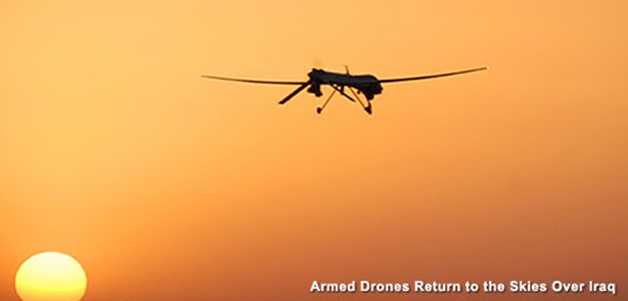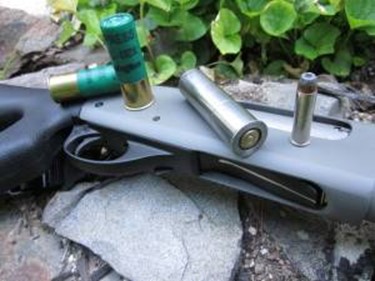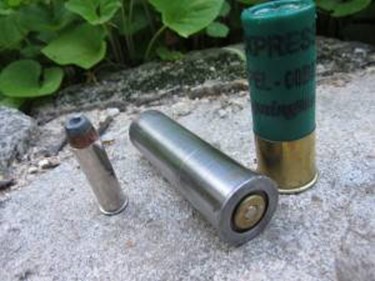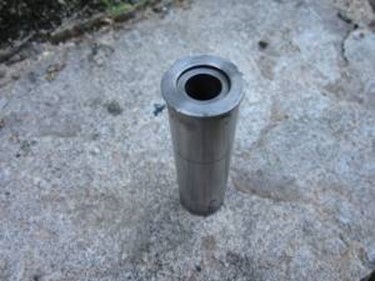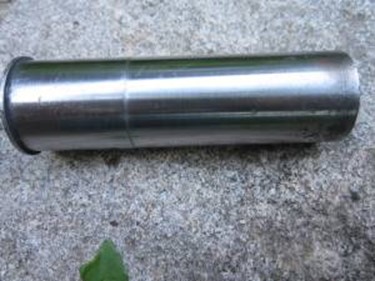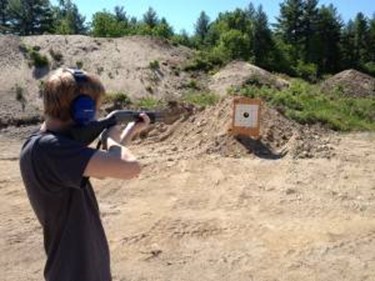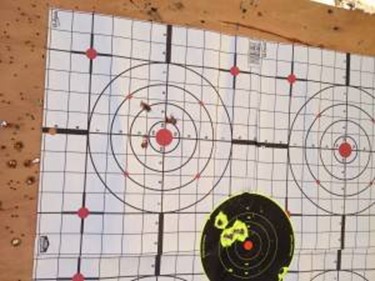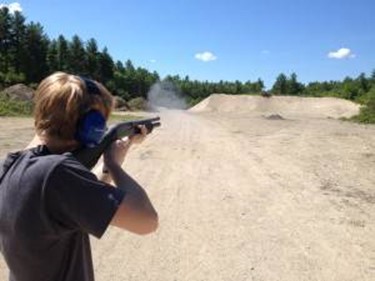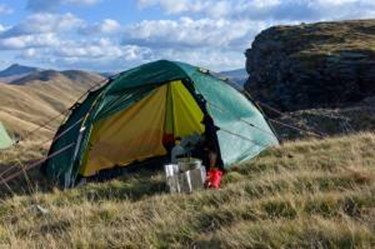“Poor Prior Planning Produces Pitifully Poor Performance”, or a similar version known as the “Six P’s”, is the mantra of this document. Plan ahead and you can survive most disasters.
Disasters come in all shapes and sizes. In trying to put together a plan, it is best to have a plan that would “basically” fit any disaster by addressing the complications brought on by a disaster. These complications include loss of power, hampered communication, compromised safe location (temporary or permanent housing), limited resources (food, water, and clothing), financial hardship (separated for obvious reasons), lack of security, lack of transportation, reduced emergency services (outside of security), loss of personal data, and a breakdown in our ability to take part in miscellaneous activities (entertainment, stress release activities, and the like).
Several of the suggested items will not be feasible for some. Depending on your living conditions (apartment vs. house), you may not have the space to take advantage of some of these suggestions. While the financial burden placed on each household to prepare is substantial, it is worth it. Remember, once you make a purchase, you should not need to replace most of these items. After you make a purchase, make sure you are ready to use the item in the event that you need to, by using what’s practical to use and reading about what’s not practical to use. Know how to use the item properly.
Keep in mind that these are suggestions. Assess your household needs and let that be the driving force for what you do/get. While the cost of these items will seem a bit much, remember that you do not have to get everything at once. Prioritize and act accordingly. If you are to use a hub site, please stock this site as well with items you will/may need. Keep a list of all items you have and cycle those items which should be cycled to keep fresh supplies as best as you can. Remember, there is no need to stock items you will not use. If you or your children don’t like certain foods, don’t waste your time or energy. While it’s true that we eat for sustenance, we all know that taste plays an important role in what we eat.
Our family plan should be three tiered. The first tier is based on a single family household structure and covers everyone who lives in a particular house. The second tier is based on an assembly at a hub site. There should be more than one hub with members designated to go to a certain hub. The third tier is based on a backup site. If you are unable to make it to your primary hub, a backup should be designated as part of the plan.
Those members who are designated to use a site as a primary hub are responsible for storing resources (pitching in to keep resources) at the hub. Family members should not be responsible for keeping items at the secondary/backup hub. In addition to this, the primary occupant of a designated hub should not shoulder the responsibility to care for all the needs of all those designated to use their home as an assembly site. As they are volunteering the use of their home, they would coordinate how it is used and have full authority of what goes on in their home.
In all that you do, be mindful of the environment. Do not dump waste into drains, leave trash to blow around the neighborhood, create unhealthy sanitary conditions for yourself or your neighbors, or create conditions that could cause a fire. Keep your home and surroundings as clean as possible to prevent the spread of germs. Take part in activities that build relationships with the whole family as well as your neighbors. Know your neighbors. Stay in touch with family members, even if you don’t like them. Together we stand; divided we fall.
Relocation, Evacuation, Extraction
The best plan for any disaster is to not be in the location where the disaster takes place. While technology has given us the ability to foresee some natural disasters, such as hurricanes, floods, and tornadoes, chances are you will be caught totally off guard in the event that one strikes. Plan for the worst, hope for the best.
Relocation is the best plan one can have in the event of an imminent disaster. The plan should be to relocate until the danger has passed. This could be a hotel out of the danger area, a hub site, a friend’s home, or whatever you designate in your relocation plan. The important thing is to have a plan. With relocation, you have the time to take whatever you deem necessary. Think of it as taking all the same steps you would take if you were going on vacation.
Evacuation plans are a must. You should not only have a plan, but you must practice it once or twice a year. With an evacuation, you take only the essentials. You may only have time to secure your home (see security), taking what you need and going. In the event you have to evacuate, remember, everyone in your area will be doing the same. The sooner you get started, the better off you will be.
Included in your evacuation plan should be instructions on how to evacuate your home and where to meet. There should be two (2) designated places to meet in your plan, both near the house. If your home is more than one story, have evacuation ladders in the bedrooms and practice going out the window. This is very important with small children who may be too scared in the time of an emergency to go out the window. If you practice, this should ease their fears. Keep a fire extinguisher in the master/adult bedroom to assist getting to your child’s room(s).
Extraction is a last resort, and it requires that someone risks their life to come in and get you out. Yes, there should be a plan for this as well. With this plan, you take what you can easily carry and nothing else. Your hands must be free to maneuver. Your body weight should not be more than what you carry on any given day. In the event that the extractor has to physically assist the extractee, do not burden them with added weight.
Each of the above plans should include taking your personal data. An ID, SScard, and birth certificate should always leave with you when you have a disaster take place. If you can get a passport, that is even better. Place these items in a water tight bag and keep it on your person, not in a bag or backpack, but literally on you.
Relocation, Evacuation, Extraction Plans should be written as a detailed subset of a Disaster plan and should be written for each household. Each member of the family should have everyone else’s plans so you know what and where people should be. Extraction plans should have a team designated to perform the extractions. This team should meet and train regularly. This may seem like it’s way out in left field, but if the need ever arose, you will be very happy that you covered the whole field and not just the bases.
You would be surprised at the types of activities which would qualify as training for other activities. Fishing actually helps an extraction team with navigation, teamwork, and battling the elements (depending on the weather when you go fishing). Camping will assist anyone with outdoor living.
Financial Hardship
Financial hardship can arrive in a number of ways, one being the loss of a job. If your place of employment is effected, and you are out of work, government assistance will be initially hard to come by. It all boils down to money. What you can and cannot do depends on how well you have planned and how you have budgeted for your plan. Do yourself a favor– have a budget and stick to it. If you spend wildly in everything you do, at least save for a rainy day.
If you put money away for your disaster plan, do not spend it on other items. Research the best products to spend your money on and make every cent count. Even if you budget 3% of your earnings (that’s $3 out of every $100 you make), you are way ahead of most people.
Start with the essentials: three days of food and water, a first aid kit, a crank radio/flashlight combo and candles. Build upon this by getting a little bit more as you are able. Soon, you will have most of what you need. If you can pool resources to raise money (see Family Business) do so. Sacrifice, what you can do without, to get what you need.
While not everyone can afford to stay at a hotel during a disaster, at least have some money set aside to offer to whomever your plan calls for you to stay with. Don’t wear out your welcome by being lazy and not contributing. Pitch in, and that means more than just financially.
It is very important to have some form of money available for immediate emergencies. This could be a credit card, a prepaid card you only have for this reason, a debit card tied to an account you only use for emergencies, cash, or travelers checks. If you put something aside, make sure it does not expire, lose its value, or becomes stale. Most check items are considered stale after six (6) months. One should never hold a check for longer than it takes to cash it. That includes company checks. You never know when those funds will not be available. If need be, cash the check and get a cashier’s check or money order. If you are really concerned about an emergency fund, remember that cash is king.
Loss of Power
This is probably the most prevalent outcome of any major disaster. It is also the easiest to rectify. Remember the “Six P’s”.
What do we need power for? It keeps food fresh, runs our entertainment items, and keeps the car going, lights on, et cetera. First things first. Have a backup to replace your lost power source.
It is imperative that a portion of your power be dedicated to essential items. With that, your power grid should be segregated. It is also important that you reduce your power consumption to an absolute minimum, in order to conserve this very valuable resource.
Create a list of all items in your home and how much energy each item consumes. Segregate that into what’s essential and what’s simply desired. Use your good judgment to determine what’s best for your needs in what should be powered and what should not. Design your power grid with a source or sources that best fit your needs and budget. The possibilities include any combination of the following:
Power Generator. This has to be big enough to run your essentials for an extended period of time. This includes enough propane, gas, and/or diesel fuel. Multi-fuel generators are a good idea.
Propane. This is a good power source, but you run into the issue of storage. Most people will only have small bottles, which will have to be refilled often. This will become a problem over time, as the ability to get propane decreases with the length of the disaster.
Batteries. While many items run on batteries, one has to store a lot of them to keep the power on for any length of time. For larger power needs, marine batteries work well. They are built to be used in this capacity. Provided there is a means of recharging them (see below), you can’t really go wrong with this option. Again, make sure the essentials are taken care of before you move on to the non-essentials.
There are several different categories with several types of batteries per category. We discuss a few battery types here:
- crank (for starting motors, i.e. your car battery),
- deep-cycle (for actually running equipment). It is very important that you use deep cycle batteries, as you are looking for a sustained power source.
- gel cell and flooded acid batteries differ in the consistency of the acid in the battery (very basic description of the difference). Gel cell batteries have several vulnerabilities, that and the fact that they are more expensive make them the lesser desired choice of the two.
Crank. There are very few items running on a crank, with flashlights being the most prevalent. However, a crank generator can be built out of an old motor, a bike, and batteries. Having the plans readily available with the parts is a good idea; having a built generator is a great idea. Building it and testing it every now and then is a wonderful idea! (Take a look at this site for small basic unit: http://www.econvergence.net/electro.htm .)
Solar. This is a great power source but requires a bank of batteries for extended use (after hours when there is no sunlight). A basic setup can cost under $500.
Wind. Here’s another great power source, but it requires a bank of batteries. Although wind power is normally available in many locations, it should not be relied on as an exclusive power supply unless you live in a very windy area. You’d do better to couple it with solar power, if possible.
Candles. These serve as a great replacement for electric lighting. They should be kept in ample supply. There are some extended life candles, which last at least 100 hours.
Glow sticks. These lighting replacements have lighting applications that extend beyond those of a candle and sometimes even that of a flashlight. Also keep in mind that they are expendable. Place them far off and leave them there to illuminate an area for surveillance, mark off distance, or even find your way back. They can be used by a child to enable the child to see and be seen without risk of burn or fire, especially if carrying his/her lighting.
Communications
This will be one of the biggest items of concern. No one can or should attempt to live in a vacuum. It is imperative that family members stay in touch to coordinate shared resources and movement, while keeping each other informed of opportunities and dangers. Care should be taken in what is discussed on any telecom device or in public for that matter.
A phone list should be developed and maintained. At least one (two would be best) out-of-state person(s) should be designated as the contact for everyone. In most disasters it is easier to make long distance calls than it is to make local calls. Have everyone contact this person with their whereabouts and plans. The hubs should call this person (people) to make and get updates daily.
Using a HAM radio is by far the best option. HAM radio is basically free, and with it you can communicate with people all over the world. As long as you have power, you can communicate. (Your HAM radio certainly qualifies as an essential item for power usage!) All you need to do is search the dial, like tuning in to your favorite radio station, and start talking. There are rules and protocols associated with the use of such equipment. This requires several people learn how to use the equipment. For best results, it should be placed in a central location.
Satellite phones are a great source of communication. You don’t have to worry about traffic on the air waves as sat phones use a different system. Even if HAM Radio is used (and especially if it is not), sat phones should be kept at each hub. They are extremely economical these days. One thousand dollars will get you a good phone with a $600 min/yr plan. If you are only using it in the event of an emergency, it is well worth the investment.
Cell phones are the communication device of choice, but everyone will be on them jamming the air waves and wrecking havoc on this particular choice. If you have one and it’s all you have, use it. If you have other options, go with the other option.
Land line phones are there. Almost everyone has a house phone, and everyone has a phone at work. If it’s all you have, use it.
Walkie talkies have a number of usages. They can be used in conjunction with HAM radios or as the primary mode of communication for your household. These days the cheap ones ($70 per unit) have a 16 mile range. If possible, an investment should be made into high end units with security features. If this is not possible and you do use them, make sure you do not discuss sensitive information on them.
Housing
Housing will be a major concern in any disaster. Temporary housing in central locations is a must. You should have what your family needs to make it through the ordeal. Not just tents, cots, and blankets but a plan. The first thought (after a disaster has occurred) is to stay where you are if you can. If that cannot take place, the next step is to get to a designated location.
Local temporary shelter. Have a tent, cots or sleeping bags, blankets, portable stove, fuel, eating utensils, and so forth to cover each member of your household. Know how to use your equipment. Consider using your equipment and staying in your own yard, if your home is uninhabitable and your yard is not flooded. Have a map handy, in case you have to relocate to locally/government-sponsored temporary housing and to be able to find your way around in general. Locally-sponsored housing raises huge security concerns. Avoid it, if at all possible. It is probably better to be extracted than to go to one of these facilities. If you must go, stay in large numbers (especially true for women and girls). Even if you don’t know the people you are gathered with, stay together for security reasons.
Relocation housing. Plans should have a designated place to meet, and each member of your household should know this place. In the event the family is split up, know your meeting place. Locally-sponsored shelters setup on the fly should be your last resort. There are far too many security, logistical, and sanitation issues associated with them.
Hub temporary housing. Have enough equipment to house those members of the family designated to use the hub as an assembly point. It is not the responsibility of the person living at the hub to supply those who will be using the hub. Store your own supplies there in the event of an emergency.
A great way to test the living conditions is to have those who are designated to use the hub (or maybe a few extra) stay the night. It’s probably best to try this over a holiday, when the family is at the house anyway. This is actually an excellent reason to move holiday functions from one house to the next, testing our ability to live together. While it is over a shorter period of time and tempers are not flaring, like they would in an emergency, we should try a test as best as we can. A test is necessary.
Backup Hub. In the event that you are unable to make it to your primary hub, the backup site is now your destination. As is always the case, communication is the key. Keep people informed of your whereabouts, what you are doing, and where you are going. Once you have made it to your backup hub, you may be able to be transported to your primary site.
We must do our best to keep families together. Children should not be split between hubs, if we can help it. Please keep in mind that these actions, if taken, are the result of an emergency. There will be a lot going on, so please try your best to get along with each other and alleviate any issues as quickly as possible.
In the event someone has to use a backup hub site, please be understanding and share your resources. Again, if transportation can be secured to get people to primary sites, that would be great. If not, please act accordingly.
Start now to make sure you are staying prepared.
Via: survivalblog
 Follow
Follow